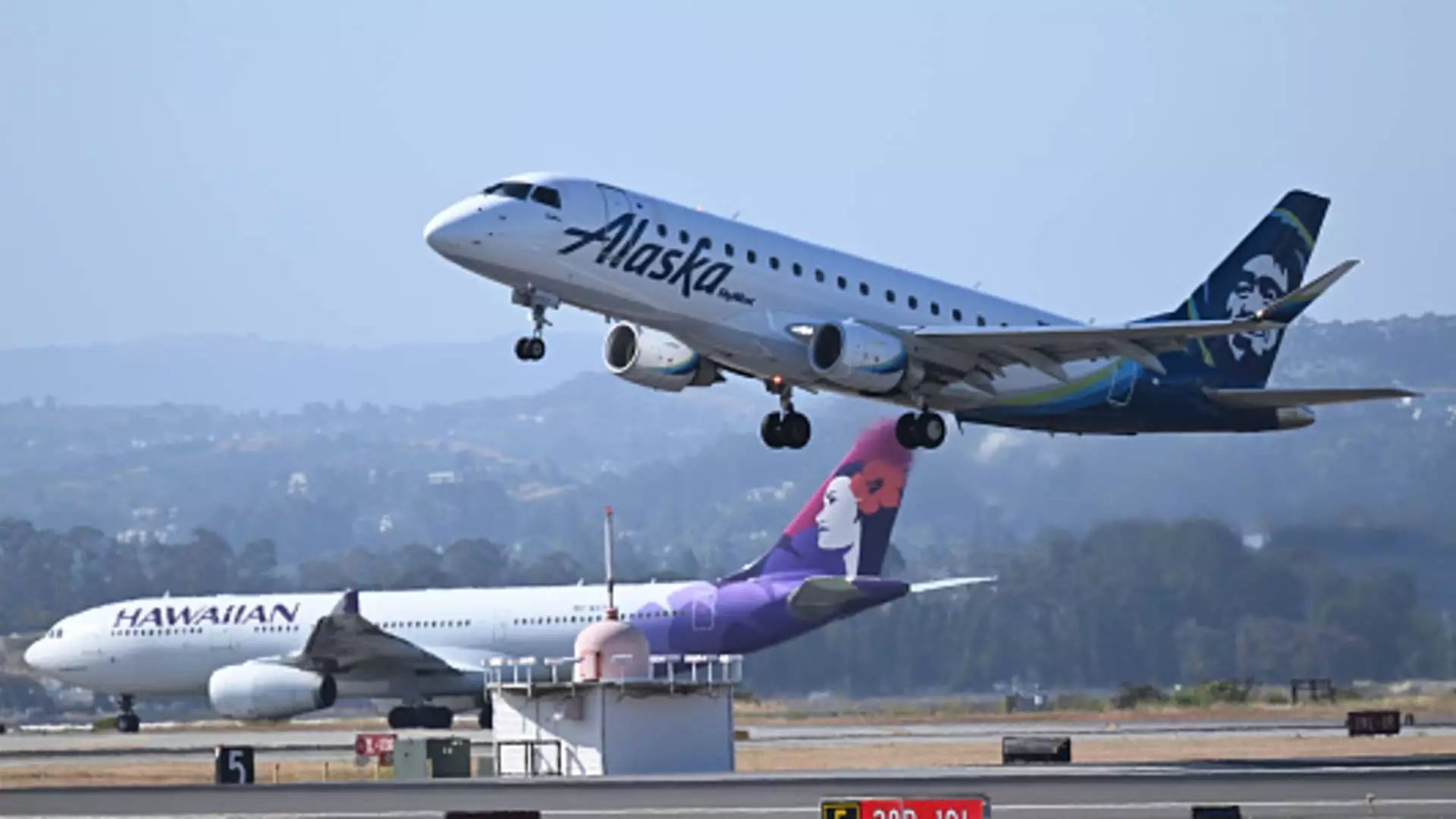In a significant development for the aviation sector, Alaska Airlines has announced that its ambitious plan to merge with Hawaiian Airlines has garnered clearance from the U.S. Justice Department. This green light comes after a thorough antitrust investigation that spanned eight months, following the initial $1.9 billion merger announcement made between the two airlines last December. The Justice Department’s decision not to pursue any legal action to block the merger is a notable achievement for Alaska Airlines, marking a pivotal step forward in a landscape characterized by increasing scrutiny over airline consolidation.
Despite this regulatory victory, the merger still awaits final approval from the U.S. Department of Transportation. This next hurdle could introduce additional complexities, though the timeline for this process remains uncertain. Stakeholders are keenly watching how this regulatory phase unfolds, seeing it as a critical factor that could shape the future operations of both airlines.
The Alaska Airlines and Hawaiian Airlines merger represents the largest consolidation in U.S. aviation since Alaska’s previous acquisition of Virgin America. This historical dimension adds a layer of significance to the current merger, particularly in light of recent aggressive moves by antitrust authorities to challenge deals that could create monopolistic conditions. The recent court ruling in January against JetBlue Airways’ acquisition of Spirit Airlines underscores the environment of heightened regulatory scrutiny that the airline industry is currently navigating.
Challenges Facing Hawaiian Airlines
While the merger presents enticing possibilities for both companies, Hawaiian Airlines has had to weather several operational challenges leading up to this deal. The company has faced a trifecta of difficulties: the devastating impact of the Maui wildfires, intensifying competition from Southwest Airlines, and the sluggish rebound of travel from Asia in the aftermath of the COVID-19 pandemic. These hurdles have resulted in net losses for Hawaiian Airlines in all but one quarter since early 2020. However, there are signs of recovery, with executives reporting improved booking trends. This suggests a potential turnaround for Hawaiian Airlines, even as it grapples with its recovery.
The market response to the impending merger has been cautiously optimistic. Hawaiian Airlines’ stock has surged nearly 12% this quarter, contrasted against a broader decline in airline stocks, which bodes well for investor sentiment. The strategic alignment between Alaska Airlines and Hawaiian Airlines presents a competitive advantage, enabling the combined entity to manage a robust fleet of over 360 aircraft servicing more than 130 destinations.
This merger could lead to increased operational efficiencies and a stronger market position for both airlines, suggesting a bold new chapter in the U.S. airline industry. As they prepare to integrate their operations while maintaining distinct brand identities, the airlines and their customers alike stand on the cusp of a transformative period in air travel.
While regulatory clearance marks a key milestone, the forthcoming phase will require navigating operational integration and market challenges. Observers of the aviation industry will undoubtedly monitor this merger’s progression with keen interest, as it has the potential to reshape competitive dynamics in the sector significantly.


Leave a Reply